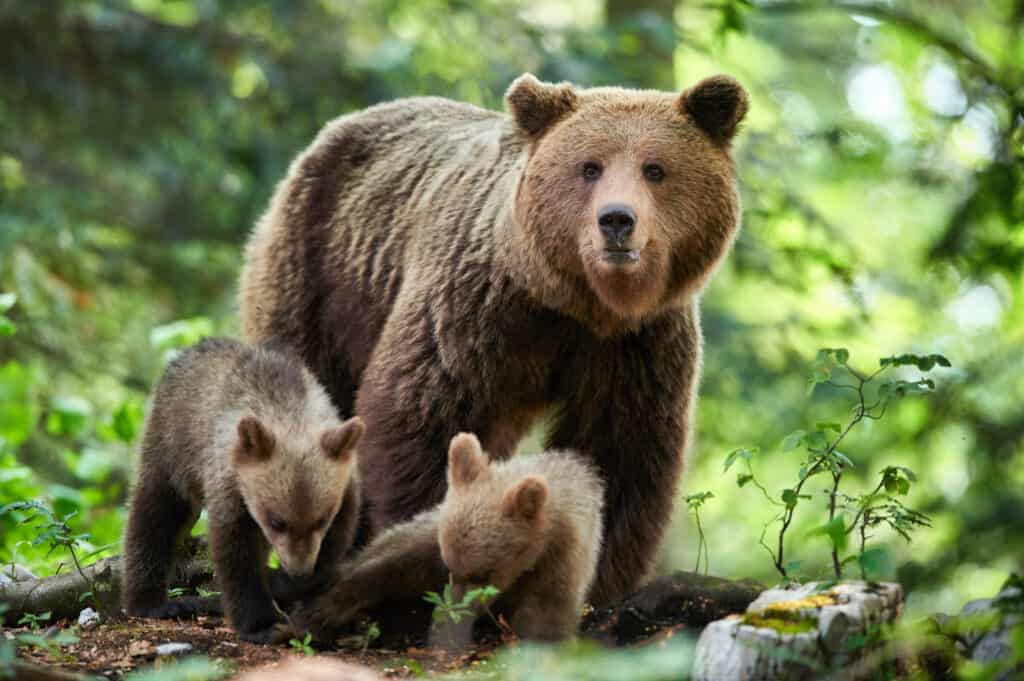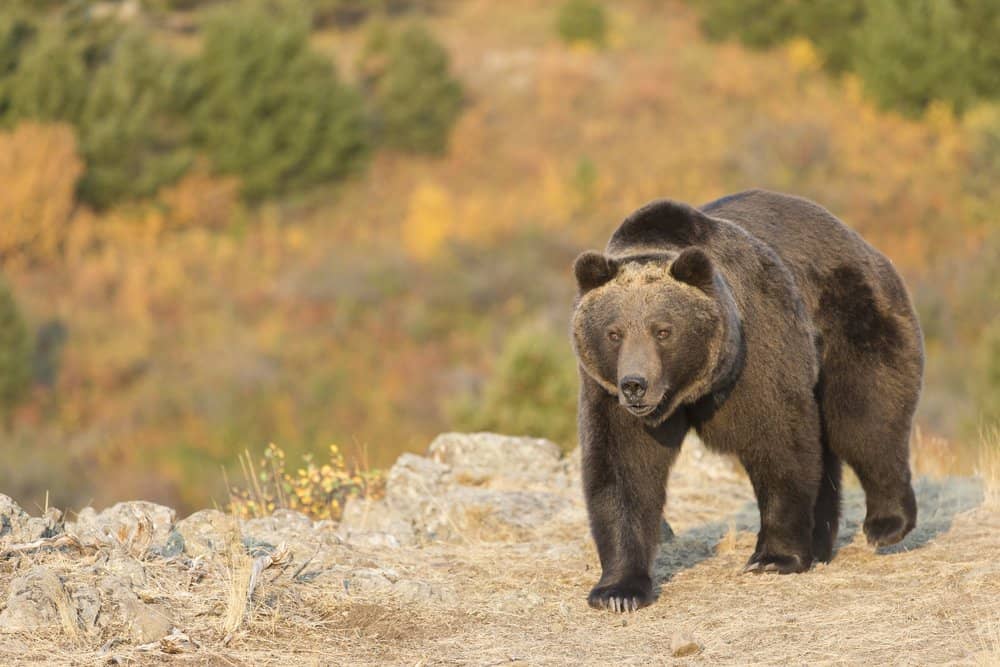When camping in the great outdoors, it’s always important to respect the rules of nature. One of the most critical ones is to stay clear of bear territory – they simply don’t like sharing! In the video below, we see a firsthand experience of a camper catching sight of a bear headed her way. Then, it’s obvious it’s not just one, but three, grizzlies closing in. The critters approach slowly, checking out the camping stuff nearby. All the while, the camerawoman wisely walks in the opposite direction. These grizzlies still aren’t happy yet, though, and decide to bluff a charge at her for good measure. After having chased the poor camper into the river, the video ends and we’re left hoping that the bears relented! Scroll further on to see this outdoor fright for yourself!
See Why You Don’t Trespass on Nature
Are Grizzly Bears Territorial?

Grizzly bear mothers stay with their offspring for over two years.
©Piotr Krzeslak/Shutterstock.com
Although bears don’t like being messed with, they are oddly enough not considered a very territorial animal. The reason behind this belief is that, as a species, they are normally solitary creatures. Exceptions include mothers traveling with their cubs, and gatherings of bears near areas that are rich in food supplies. In general, bears will be understanding with each other if their current range is shared. However, they follow a very strict hierarchy and are rarely shy when it comes to flexing to prove who’s the biggest critter!
Are Grizzly Bears Endangered?

The natural range of the grizzly bear has considerably shrunk in the last 100 years.
©Dennis W Donohue/Shutterstock.com
Although they were once at risk of being wiped out, grizzly populations have recently recovered thanks to conservation efforts. At the time of this writing, this majestic species is considered of Least Concern by the IUCN. This is due to their numbers in the wild being currently viewed as stable. However, they remain under protection in many jurisdictions, with laws often in place to guard them from further harm. For example, these amazing animals are federally protected within the United States, despite only living within five states.
It’s worth noting that through the dark history of this species’ endangerment, attempts have been made to delist them from protection. However, dedicated animal rights activists have long been striving to ensure the future of these burly critters stays bright. There are still storms on the horizon, though, as the modern definitions for what makes animals endangered are a hot topic for debate.
Thank you for reading! Have some feedback for us? Contact the AZ Animals editorial team.








